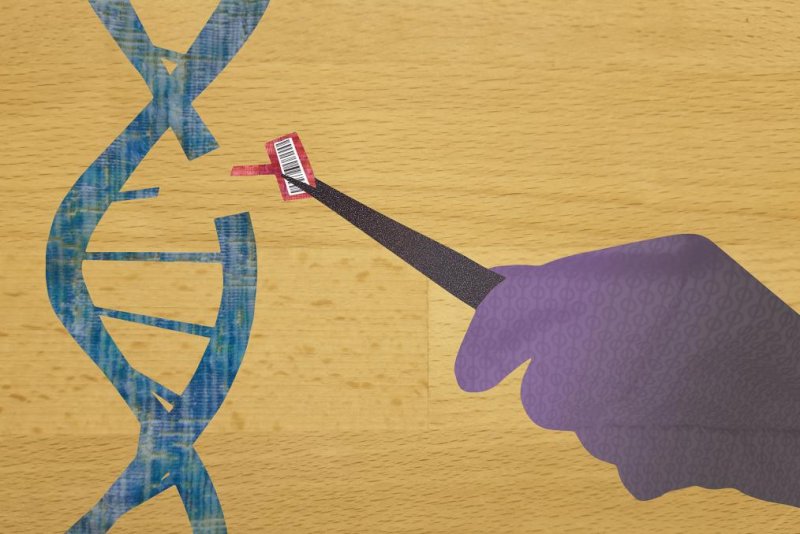The new CRISPR platform uses a unique barcoding system to more efficiently store and track information related to the genetic engineering happening inside a cell. Photo by Kelly Irvine/NIST
May 8 (UPI) -- Scientists have developed a new CRISPR platform that will make gene-editing more precise. Researchers believe the upgrade, dubbed MAGESTIC, will make CRISPR work less like scissors and more like word processors.
"MAGESTIC is like an advancement in the 'control F' [find text] operation of a word-processing program, with the replace-text command allowing a desired change," Kevin Roy, a MAGESTIC developer and researcher at the Joint Institute of Metrology and Biology, said in a news release. "This lets us really poke at the cell in a very precise way and see how the change affects cell function."
"Then we can compare the actual effects of each variant with the computationally predicted effects, and ultimately improve models for predicting how genetic variants impact health and disease," Roy said.
Geneticists can use CRISPR to excise sequences of DNA code, but they don't always know how the strands will repair themselves -- how the excised snippets will be replaced or how the two strands will reform.
As part of the latest efforts, JIMB researchers set out to build a CRISPR platform capable of both cutting and pasting. MAGESTIC works by hijacking the cell's DNA repair mechanism. Typically, a cell must survey millions of DNA pairs to locate a suitable replacement.
MAGESTIC uses a process called "active donor recruitment" to artificially recruit a pre-chosen sequence to the cut site. The method allowed scientists to not only cut and paste, but also increased the survivability of the cell.
CRISPR normally uses circular DNA, called plasmids, to track the gene-editing mutations inside each cell. The plasmids work like mini barcodes, providing a record of the manipulation. But as the cell grows, the plasmids multiply, confusing the information sorting process. MAGESTIC incorporates barcodes into the cell's chromosomes, a more stable location for information storage.
By more efficiently tracking mutations within cells, researchers can better locate the tiny genetic differences that account for susceptibility to disease or evolutionary adaptations. The improved barcode technology will help scientists identify the impact of genetic variations on cell function.
"We are reaching a state where we have not only achieved the ability to sequence the order of base pairs in genomes but we can also make changes to them," said Lars Steinmetz, JIMB researcher and a professor of genetics at Stanford University. "We still need a better understanding of the consequences of our edits."
Steinmetz was the senior author of a new paper on the breakthrough, published this week in the journal Nature Biotechnology.
"With MAGESTIC it's like being able to make small edits to individual letters in a book, and being able to see what effect it has on the meaning of the text," Steinmetz said. "Our donor recruitment method also allows the new piece of information to be placed at exactly the right page where the cut occurred."















